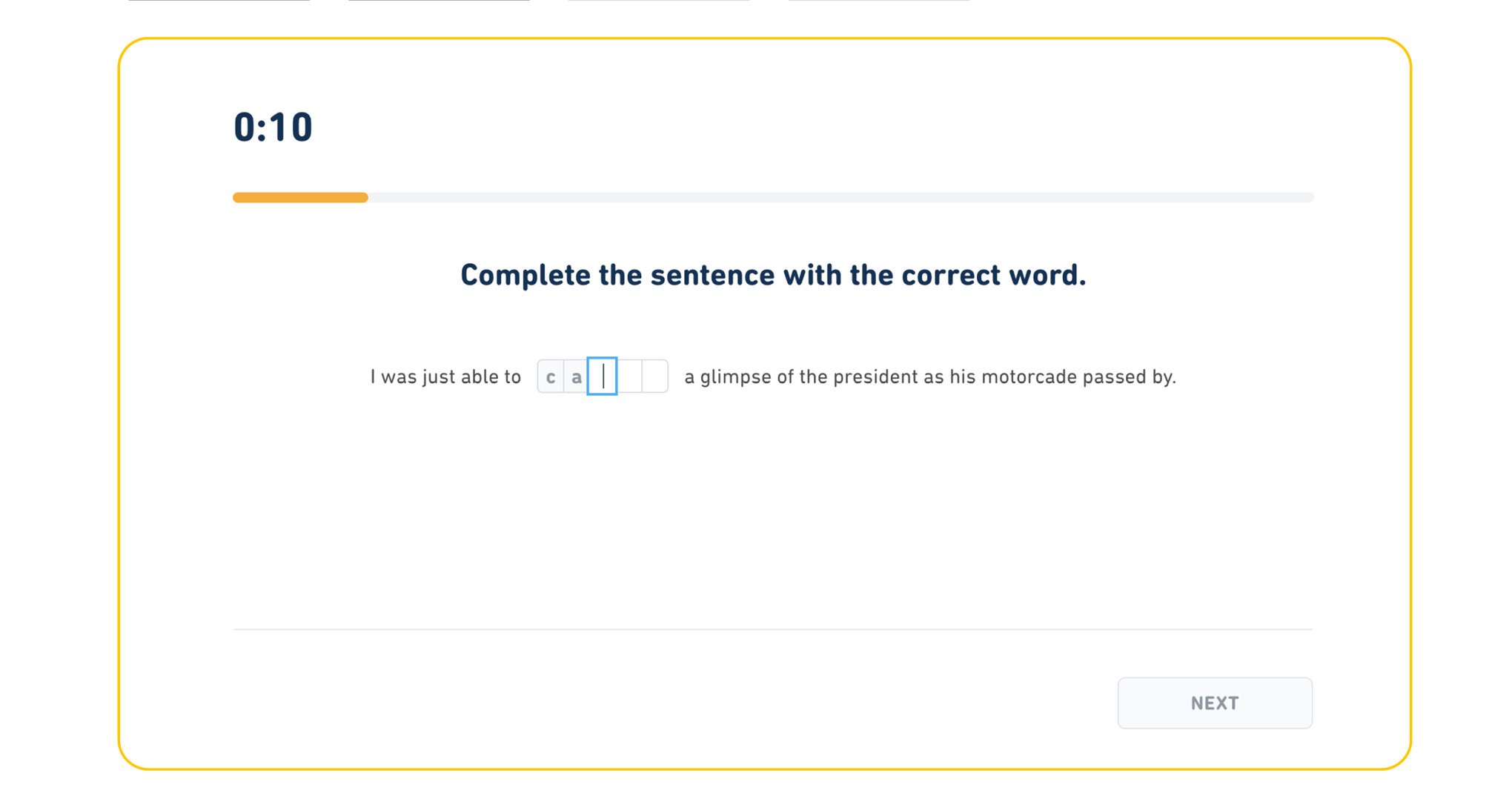Introduction
The Duolingo English Test (DET) is a quick, convenient and affordable alternative when compared to tests like the TOEFL or IELTS.
But it is SO CONFUSING to learn about all the different question types.
Let’s make your life easier and learn everything you need to know about the Fill in the Blanks question types (also known as “Complete the Sentence”).


Over 100 Free DET Practice Questions
Here’s what you will learn:
Fill in the Blanks: Everything You Need to Know
So what are Fill in the Blanks questions?
Simply put:
Fill in the Blanks questions provide a sentence with a missing word. This missing word will include a few of the first letters of the missing word as a clue. You must understand the sentence structure and context to identify and spell the missing word correctly.
Details:
Question Frequency
Expect 6-9 sentences in a row towards the beginning of the test with one missing word in each sentence
Sentence Length
It varies between 8-24 words; typically 11-16 words with 1 missing word per sentence.
Time Limit
You have 20 seconds per sentence/question.
Your Goal
Type in the correct word to complete sentence
Fill in the Blanks: Tips and Tricks
- Understand the Context: Read the entire sentence first so you can get a general idea of the meaning before answering. It will help you understand whether the word you type fits or not in the given context.
- Check Your Grammar: Make sure that the written word fits grammatically within the sentence.
- Answer Quickly: You only have 20 seconds, so the time will fly. However, if you answer quickly, you can see what you typed in the blank. This is a great chance to check your spelling and make sure the word looks and sounds correct in context.
- Practice with Various Texts: You can actually generate your own Fill in the Blank questions from texts you love with this tool here.
- Expand Vocabulary: One amazing tool to use is Quillbot’s paraphrasing tool. It can rewrite any short text for free, which is a great way to learn new words and phrases.
- Review Common Phrases: Check out this short list of useful collocations to help you identify groups of words that are often linked together. This would be great practice for Read and Complete questions as well.
- Timed Exercises: Practice under timed conditions to simulate the test environment. Bonus points if you can finish in less time, for example, 15 seconds instead of 20 seconds.
- Seek Feedback: If you continue to struggle, get corrections from teachers who can diagnose your weaknesses and provide ideas on how to improve.
Fill in the Blanks: Practice Smart
Remember to use test-like sentences when you practice.
What do I mean?
For example, sentences are not usually extracted from a novel, like:
“The trees cast sharp dark shadows, spilling and spreading across the floor.” This is a literary example and not common on the Duolingo English Test.
Sentences that feel like they are simple dairy entries are more common. “Today I decided to enroll in a new philosophy course.”
Or if it sounds like a textbook, “Recent research has greatly expanded our knowledge of microorganisms.”
Remember…
This is a test to see if you are ready for a North American university, so they will sound like sentences you will encounter on campus.
You can practice with sentences that mirror the test format here at TST Prep.
Fill in the Blanks: Test Day Approach
- Keep Your Eyes on the Screen: One easy way to lose focus is to look away from the screen. Keep your eyes on your test.
- Read Thoroughly: Remember to read the entire sentence before typing your response.
- Use Context Clues: Identify keywords that help determine the correct word.
- Double-Check Answers: Try to answer quickly, read your sentence aloud and check your spelling to make sure it looks and sounds correct.


Over 100 Free DET Practice Questions
Conclusion
These questions move fast.
There will be at least six sentences to complete and you will have only 20 seconds per questions.
But now you know what to do:
- Stay focused, eyes on the screen
- Read the entire sentence first
- Answer quickly
- Double-check your spelling
Use some of the tools linked above to practice expanding your vocabulary, finding context clues in sentences, and practicing with the type of sentences you can expect to find on test day.
Do you have any more tips for this question type? Share in the comments below and help us all improve.









